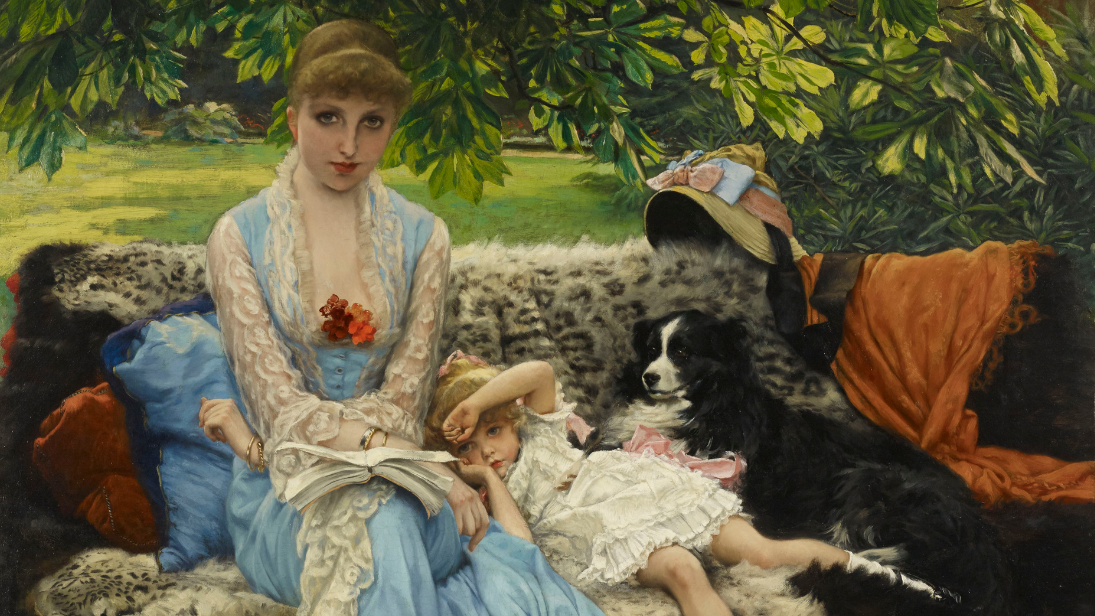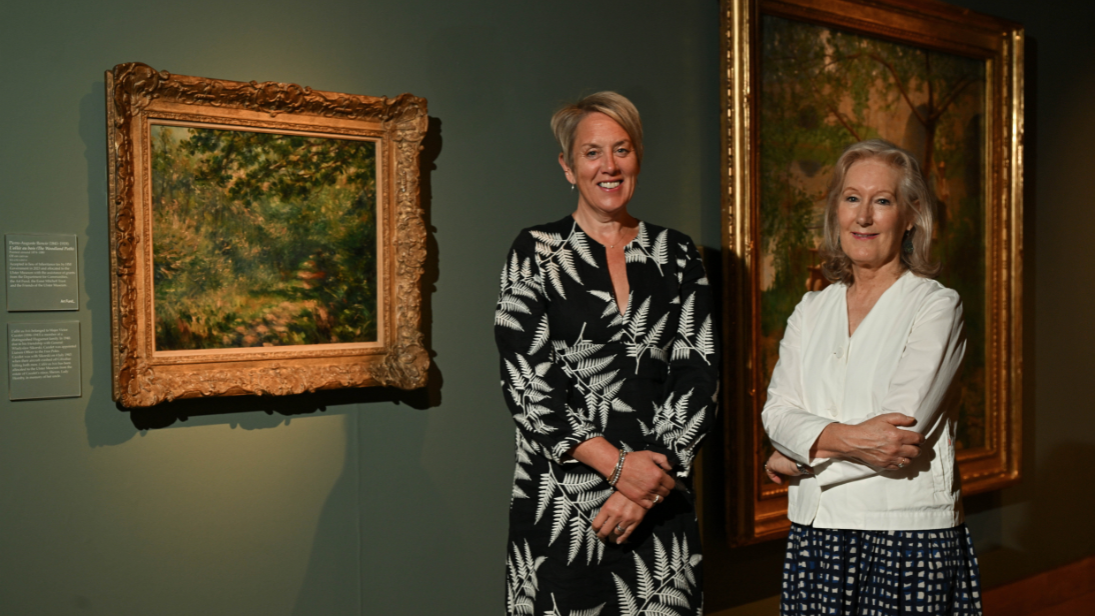
Light from the West; Irish Art after 1870
Our 'Light from the West' exhibition has had a refresh and is now on display at Ulster Museum.
Irish Art lies at the heart of the Ulster Museum collections. In the years following 1870, a number of ambitious Irish artists travelled to France and Belgium to study painting. Often termed 'Irish Impressionists', these talented artists painted in the open air and brought a new spirit of naturalism to Irish painting.
In the early 1900s, Irish artists spent long periods in the West of Ireland, drawn by the wild remoteness of the landscape, and the brilliant purity of Atlantic light. It was there they encountered a traditional way of life that was quickly disappearing. Painters like Jack Yeats, Paul and Grace Henry, William Orpen and Seán Keating grew fascinated by the majestic landscapes of the West, and the hard, resilient lives of its people. Other Irish artists took to more cosmopolitan settings, such as Lavery and his paintings of Morocco and the private world of his London studio. This exhibition now features Renoir, who would have influenced many Irish artists, and two of Sir John Lavery's most evocative works: Under the Cherry Tree (1884) and Daylight Raid from my Studio Window, 7 July 1917.
Visit this beautiful exhibition for free. No booking necessary.
In the gallery
L’allée au bois by Pierre-Auguste Renoir

Renoir’s L’allée au bois is the first French Impressionist painting to enter a public collection in Northern Ireland and represents an outstandingly important acquisition for the Ulster Museum. It fills an important gap in the collection, and will enable a deeper understanding of the work of the ‘Irish Impressionists’ such as Roderic O’Conor, John Lavery and Paul Henry, who travelled to France to study the achievements of Impressionism in the years after 1870. Pierre-Auguste Renoir was one of the leading figures of Impressionism in Paris during the 1870s and 1880s. Throughout these years Impressionist painters created an entirely new style of painting, using only loose, fragmented brush strokes to evoke the changing colours and myriad qualities of light.
Born in Limoges, Renoir moved to Paris as a child. There he met Claude Monet with whom he developed the ideas and techniques of Impressionism and made painting trips to the forest of Fontainebleau and at La Grenouillère, a boating resort on the River Seine not far from Paris. L’allée au bois’ was painted between 1874 and 1880 in a wood near Paris, although the precise location is unknown. The small light-filled woodland scene is a purely Impressionist work giving the viewer the sense of entering a forest glade where a light breeze gently rustles leaves and grasses in the heat and dappled shade of a late afternoon summer’s day.

Under the Cherry Tree by Sir John Lavery

Born in Belfast, Lavery began his artistic training in Glasgow. During the early 1880s he studied in Paris and made visits to the artists’ colony at Grez-sur-Loing, near Fontainebleau. At Grez Lavery was one of many young artists to set up their easels in the fields around the picturesque village and work en plein-air, a term used to describe painting in the open air.
Originally called On the Loing; An Afternoon Chat, the painting now known as Under the Cherry Tree is larger and more ambitious than any Lavery had previously attempted. It is a youthful masterwork, heavily influenced by Bastien-Lepage and was intended to display the painterly techniques he had recently acquired through study in France.
The composition of Under the Cherry Tree is divided into three distinct areas and Lavery employed a different technique in the painting of each. The foreground vegetation is thickly painted with tall plants and fallen stalks creating a framework for the tiny brightly coloured wild flowers. The figures are modelled with confident squared brushstrokes and, although set widely apart, their easy intimacy anticipates Lavery’s later portrait groups. The bridge and slowly flowing river are thinly painted with light brushstrokes heightening the gentle, languorous quality of the work.
Daylight Raid from my Studio Window, 7 July 1917 by Sir John Lavery

Daylight Raid from my Studio Window, 7 July 1917 records the afternoon of 7th July, 1917, when German Gotha biplanes appeared in the skies above London and were engaged by the Royal Naval Air Service and the Royal Flying Corps. The ensuing dogfight was clearly visible from the large window of Lavery’s studio in Kensington and is watched by the artist’s wife Hazel, her head outlined against a blackout curtain.
Lavery was particularly adept at recording large gatherings and events by making rapid impressionistic oil sketches. Here he uses quick fluid brushstrokes to describe the disorderly clutter of his spacious studio and the menacing presence of the tiny planes in the clear sky beyond.
Lavery was an official war artist attached to the Royal Navy during the Great War. Although he did not visit the front his war paintings reveal much about the anxiety of civilian life in London and the country. Lavery was fascinated by the curious beauty and dramatic possibilities of the new war in the air and made many studies of aircraft. He was probably the first artist to paint from the air, working from an airship above a convoy in the North Sea in 1918.
Explore More
Tissot’s Mysterious Irish Muse
Take a closer look at James Tissot and explore the story behind his Irish muse.
Featured in this ExhibitionRenoir masterpiece, L’allée au bois, acquired by National Museums NI
This is a highly important acquisition for the Ulster Museum as it is the first Impressionist painting to enter a public collection in Northern Ireland.
Read more about the acquisition
